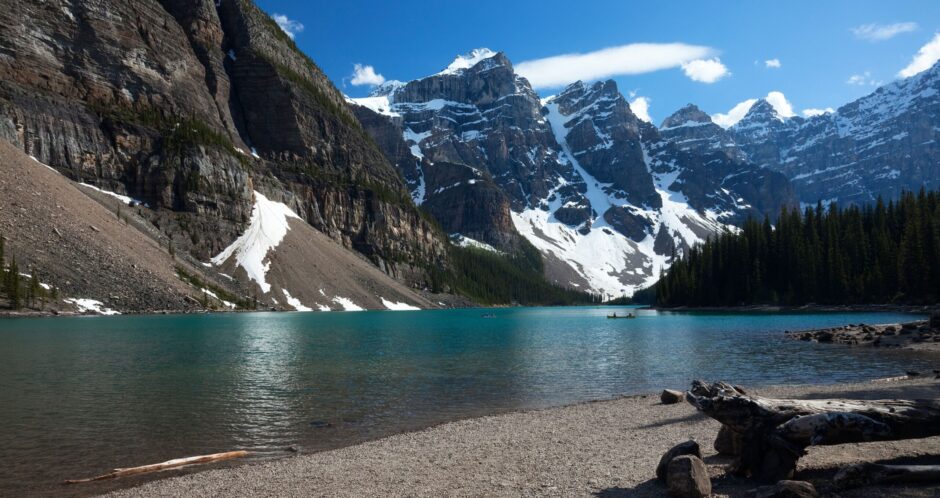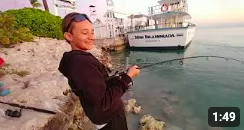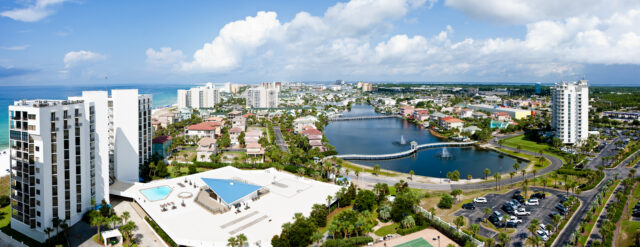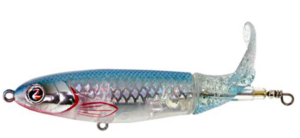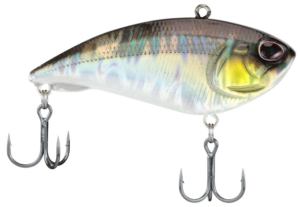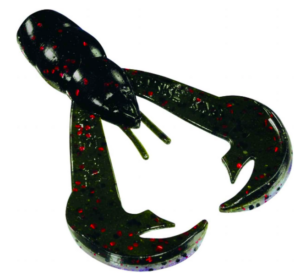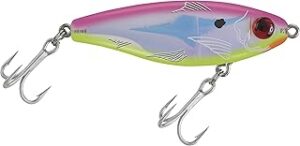Rainbow Trout — Alberta’s Rocky Mountains
Iconic Rocky Mountain sport fish known for surface eats and blistering runs. Native to some drainages and widely established throughout the region’s cold, clear lakes and rivers.
Where to Catch: Main-stem and tributary rivers with riffle–run–pool structure; plateau and foothill stillwaters with marl shoals, weed lines, and drop-offs.
Best Time to Fish: Ice-off through late June for stillwaters; June–September on rivers during insect hatches and stable flows.
| Season | Activity |
|---|---|
| Spring (Mar–May) | Excellent after ice-off; strong chironomid & leech bite on lakes; nymphs/streamers on warming rivers. |
| Summer (Jun–Aug) | Excellent early/late; dry flies (PMD, caddis, terrestrials); mid-day go deeper with nymphs/intermediate lines. |
| Fall (Sep–Nov) | Very good; fish feed hard on leeches/scuds; BWOs on cloudy days; weeds thin, access improves. |
| Winter (Dec–Feb) | Fair where safe ice/open tailwater exists; tiny midges and slow presentations. |
Peak Season: Late April–June (lakes) and mid-June–September (rivers).
Tackle & Tips
Lures: 1/8–1/4 oz spoons, #1–#3 spinners, small crankbaits along drop-offs and windward shores.
Bait: Single eggs, worms (where legal), shrimp/corn for stocked ponds (check regs).
Leaders: 9–12 ft fluorocarbon, 4–6 lb (4X–5X fly) for clear water; step up in wind or weeds.
Gear: 4–6 wt fly rods with floating & intermediate lines; light/med-light spinning gear with 6–8 lb mainline.
Cutthroat Trout — Alberta’s Rocky Mountains
Native mountain trout favoring cold, pristine streams and high-country lakes. Aggressive surface feeders with classic orange throat slashes.
Where to Catch: Small to mid-sized freestones, headwater creeks, beaver-pond complexes, and select alpine lakes with inlet/outlet flow.
Best Time to Fish: Post-runoff through early fall when water is clear and stable; afternoons warm up high elevations.
| Season | Activity |
|---|---|
| Spring (Mar–May) | Good late spring as flows settle; small nymphs/leeches in softer seams and pocket water. |
| Summer (Jun–Aug) | Excellent; dry-fly sight-fishing (caddis, PMD, ants, hoppers). Alpine lakes prime on warm afternoons. |
| Fall (Sep–Nov) | Very good; fish push into pools and tailouts; small streamers and attractor dries on sunny days. |
| Winter (Dec–Feb) | Limited; occasional tailwater windows with tiny midges; many creeks iced or closed (check regs). |
Peak Season: Late June–August (creeks & alpine lakes).
Tackle & Tips
Lures: Ultralight spinners (#0–#1), micro spoons; keep presentations subtle in skinny water.
Bait: Usually artificial-only in key waters—verify regulations.
Leaders: Long 10–12 ft tapers, 5X–6X for spooky fish; add 3–4 ft of tippet for stealth.
Gear: 3–4 wt fly rods, floating line; ultralight spinning (2–6 lb) for small creeks. Approach low and slow; prioritize clean releases.
Bull Trout — Alberta’s Rocky Mountains
Native char and apex predator of the Rockies. Conservation-minded targeting is essential—handle with care and follow all province-specific regulations.
Where to Catch: Cold, connected river systems with deep green pools, cutbanks, and confluences; migratory fish use main-stems and larger tribs; some deep lakes hold resident populations.
Best Time to Fish: Late spring through early fall during stable flows; avoid spawning periods and closed areas.
| Season | Activity |
|---|---|
| Spring (Mar–May) | Good to Very Good as water warms; swing big streamers in pools and along seams; overcast days excel. |
| Summer (Jun–Aug) | Excellent first/last light; target baitfish concentrations below riffles and at tributary mouths. |
| Fall (Sep–Nov) | Variable—observe closures and leave spawners alone; post-spawn fish feed heavily where open. |
| Winter (Dec–Feb) | Limited; deep slow pools if open; very slow presentations. |
Peak Season: Late June–September during stable flows (non-spawning, open waters only).
Tackle & Tips
Lures: 3–5″ minnow plugs, #3–#5 spinners, 1/4–1/2 oz spoons; swing across current, pause on the drop.
Bait: Commonly artificial-only for bull trout—confirm local rules before fishing.
Leaders: Abrasion-resistant 10–15 lb fluorocarbon; wire not needed but check for logjams and rocks.
Gear: 6–8 wt fly rods with sink-tips (type 3–6) and articulated streamers; medium spinning gear with 15–20 lb braid + fluoro leader. Keep fish wet and minimize air exposure.
Brook Trout — Alberta’s Rocky Mountains
Colorful char species with worm-like vermiculations on the back and bright orange bellies in fall. Introduced to the Rockies and thriving in many cold streams and alpine lakes.
Where to Catch: Cool, clear creeks, beaver ponds, and high-elevation lakes; prefers shaded pools, undercut banks, and inlets/outlets with steady flow.
Best Time to Fish: Late spring through early fall when insect activity is high and water temps remain cool.
| Season | Activity |
|---|---|
| Spring (Mar–May) | Good in late spring as ice recedes; small nymphs, leeches, and attractor dries in softer water. |
| Summer (Jun–Aug) | Excellent; active surface feeders on caddis, mayflies, and terrestrials; dusk and dawn prime times. |
| Fall (Sep–Nov) | Very good pre-spawn; bright colors; fish aggressively strike streamers and large attractors. |
| Winter (Dec–Feb) | Limited; occasional ice fishing opportunities in stocked lakes with small jigs tipped with bait. |
Peak Season: Late June–August.
Tackle & Tips
Lures: Small spinners (#0–#1), micro spoons, and 1–2″ minnow plugs.
Bait: Worms, salmon eggs, or artificial flies (check local bait regs).
Leaders: 4–6 lb fluorocarbon for stealth; lighter in clear, still waters.
Gear: 3–5 wt fly rods with floating lines; ultralight spinning gear for small creeks and ponds.
Lake Trout — Alberta’s Rocky Mountains
Large, deep-water char with silver-gray bodies and light spots. Powerful fighters and long-lived apex predators in cold, deep mountain lakes.
Where to Catch: Deep, clear lakes with rocky structure, drop-offs, and shoals; moves shallower during spring and fall.
Best Time to Fish: Ice-off to early summer in shallow zones; late summer and winter over deep humps, ridges, and points.
| Season | Activity |
|---|---|
| Spring (Mar–May) | Excellent right after ice-off; fish cruise shallow flats and shoals chasing baitfish. |
| Summer (Jun–Aug) | Fair to Good; fish move deep (50–100+ ft); use downriggers or heavy jigs. |
| Fall (Sep–Nov) | Good pre-spawn; fish move shallow again to gravelly shorelines and points. |
| Winter (Dec–Feb) | Very good ice fishing over deep structure; use large tube jigs or spoons tipped with bait. |
Peak Season: May–early June and September–October.
Tackle & Tips
Lures: 3–6″ white tube jigs, heavy spoons, deep-diving crankbaits.
Bait: Minnows or cut bait where legal.
Leaders: 10–15 lb fluorocarbon for clear lakes; heavier if targeting trophy fish.
Gear: Medium-heavy spinning or baitcasting outfits for trolling/jigging; 8–10 wt fly rods for streamer work in shallow water.
Arctic Grayling — Alberta’s Rocky Mountains
Elegant, sail-finned salmonid with iridescent hues, found in select pristine headwaters. Known for aggressive surface takes and a willingness to strike a variety of flies and small lures.
Where to Catch: Cold, clear headwater streams, small rivers, and remote alpine lakes. Concentrate near inlet/outlet areas and gentle riffle–run sections.
Best Time to Fish: Late spring through early fall when waters are ice-free and temperatures remain cool.
| Season | Activity |
|---|---|
| Spring (Mar–May) | Fair early; improves after ice-off. Small nymphs and attractor dries work in softer water. |
| Summer (Jun–Aug) | Excellent; dry-fly fishing with caddis, mayflies, ants, and hoppers. Sight-fishing in clear runs is prime. |
| Fall (Sep–Nov) | Good until freeze-up; fish feed actively before winter. Use small streamers and nymphs in deeper runs. |
| Winter (Dec–Feb) | Minimal opportunity; most waters iced over or closed. Rare tailwater action with tiny midges. |
Peak Season: Late June–August in open headwaters.
Tackle & Tips
Lures: Small spinners (#0–#1), micro spoons, and tiny crankbaits in silver or gold.
Bait: Often artificial-only in grayling waters; confirm local regulations.
Leaders: 9–12 ft, 5X–6X tippet for stealth in ultra-clear water.
Gear: 2–4 wt fly rods with floating lines; ultralight spinning outfits with 2–6 lb line. Keep handling to a minimum for quick releases.
Mountain Whitefish — Alberta’s Rocky Mountains
Native salmonid valued for its abundance, subtle take, and fine eating quality. Prefers cold, oxygen-rich waters and often found alongside trout.
Where to Catch: Larger rivers, tailwaters, and cool lakes. Look for deep pools, runs below riffles, and drop-offs near gravel bottoms.
Best Time to Fish: Year-round in open water; late fall spawning draws concentrations into shallower runs.
| Season | Activity |
|---|---|
| Spring (Mar–May) | Good in warming shallows; nymphs and small jigs work well in moderate currents. |
| Summer (Jun–Aug) | Very good; active early and late in the day. Drift nymphs, scuds, or small soft plastics. |
| Fall (Sep–Nov) | Excellent pre-spawn; fish gather in riffles and tailouts. Egg patterns and nymphs excel. |
| Winter (Dec–Feb) | Fair under safe ice; use small jigs or flies tipped with maggots/worms near bottom. |
Peak Season: September–November during pre-spawn and spawn runs.
Tackle & Tips
Lures: Small spoons, micro-jigs, and beadhead nymphs drifted near the bottom.
Bait: Maggots, worms, single eggs (where legal).
Leaders: 7–9 ft, 4–6 lb mono or 4X–5X tippet for fly setups.
Gear: 3–5 wt fly rods with floating or nymphing lines; light spinning rods with sensitive tips for detecting soft bites.
